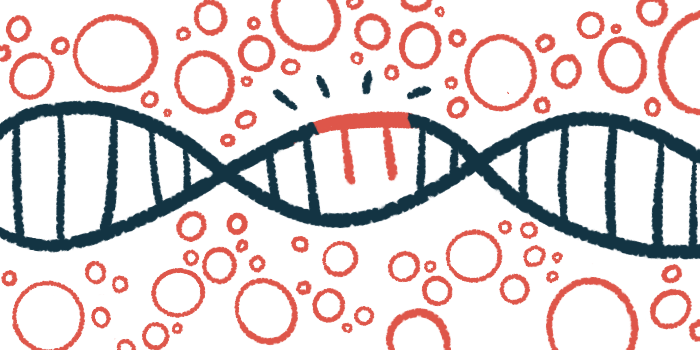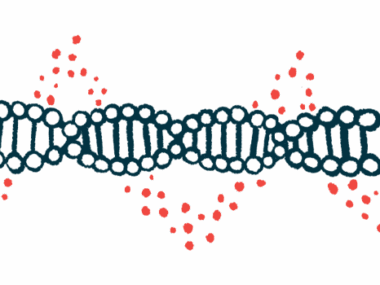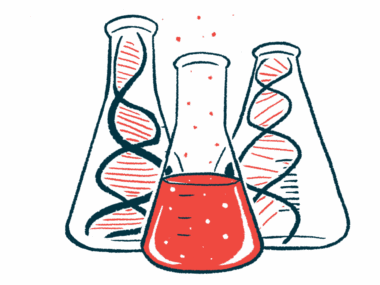Different SMN1 gene mutations lead to milder SMA in 2 siblings
Cases study describes brother and sister with 1 common, 1 rare mutation
Written by |

A milder form of spinal muscular atrophy (SMA) was discovered in two siblings who carry a common mutation in one SMN1 gene and a rare mutation in the other, a new study by Mayo Clinic researchers reported.
Skin cells from the brother and sister showed higher levels of SMN, the protein encoded by SMN1, compared with an unrelated patient who carried two typical mutations in both SMN1 genes.
These findings suggest that, in these siblings, “SMN can form partially functional SMN complexes that may carry out essential cellular functions and result in mild disease,” the researchers wrote.
Further research into this rare mutation may shed light on “altered gene expression that is critical for motor neuron function and survival,” the team noted.
The cases were described in a study titled “SMN1 c.5C>G (p.Ala2Gly) missense variant, a challenging molecular SMA diagnosis associated with mild disease, preserves SMN nuclear gems in patient-specific fibroblasts,” which was published in the journal Frontiers in Genetics.
Siblings with rare cases return to clinic after 20 years
Nearly all cases of SMA are caused by homozygous mutations in the SMN1 gene, meaning both genes, one inherited from each parent, carry the same defect. Most commonly, the mutated genes are missing a segment along the DNA strand called exon 7.
Such mutations disrupt the production of SMN, a protein necessary for the function of motor neurons, the specialized nerve cells that control movement. Without sufficient amounts of SMN, motor neurons die off, giving rise to hallmark SMA symptoms such as muscle weakness and atrophy, or shrinkage.
Disease severity in SMA is dictated by the number of copies a person has of a second SMN2 gene, which can partially compensate for the loss of SMN1 and allow some SMN protein to be made. Generally, those with more SMN2 copies develop the condition later and have less severe disease.
In rare cases, however, one inherited gene is missing exon 7, while the other carries a different mutation — a state known as compound heterozygous.
In this report, researchers based at the Mayo Clinic, in Minnesota, investigated the disease progression of two SMA siblings with compound heterozygous mutations. Each carried an exon 7 deletion in one SMN1 copy and another mutation, called Ala2Gly, in the second.
As adolescents about 20 years ago, the two siblings — the brother then 16 years old, and the sister then 15 — visited the neurology clinic with progressive muscle weakness.
As a child, the boy was delayed in hitting motor milestones and began falling at the age of 11, eventually needing a wheelchair. His younger sister’s motor function developed normally until she showed signs of progressive muscle weakness at 11 and also required a wheelchair.
A physical examination of both patients found muscle weakness was more prominent in the lower extremities. Electromyography, done to assess the health of muscles and the motor neurons that control them, was consistent with SMA, and a biopsy of the girl’s muscle showed signs of atrophy.
Based on these clinical findings, SMA was suspected, but genetic testing found that only one SMN1 gene had the exon 7 deletion mutation, which was “not diagnostic of SMA,” the team noted. Regardless, both siblings were diagnosed with SMA under the suspicion that they carried a different mutation in the second SMN1 gene.
Researchers investigate rare SMN1 gene mutation in brother, sister
Now, at the ages of 36 and 34, both siblings returned to the clinic with newly developed weakness in the upper extremities. Neither sibling had difficulties with swallowing or breathing.
At that time, a complete SMN1 gene analysis revealed a second mutation, called Ala2Gly, and both patients were found to have two SMN2 copies.
The researchers noted that “their clinical course is not consistent with the classic clinical course of SMA patients with two copies of SMN2.”
As a comparison, the team described the case of a third SMA patient, a 6-year-old boy with two SMN2 copies and two exon 7 SMN1 deletions. At birth, this child experienced feeding difficulties and had decreased muscle tone. At 3 months of age, he needed breathing support and eventual feeding support.
Lastly, the team examined skin cells from all three patients and a healthy SMA carrier control, who was the mother of the 6-year-old boy. SMN protein levels were higher in the siblings’ cells than in the younger boy’s.
[These] data [suggest] there are discrete functions of SMN that can regulate motor neuron survival and function and investigating the [Ala2Gly] SMN will lead to a greater understanding of SMN function.
The brother and sister also had significantly more nuclear gems than did the boy. Those are structures within the cell’s nucleus containing the large complex formed by SMN and other proteins. The number of nuclear gems between the two siblings was similar but significantly lower than that of the boy’s mother.
These “data [suggest] there are discrete functions of SMN that can regulate motor neuron survival and function and investigating the [Ala2Gly] SMN will lead to a greater understanding of SMN function,” the researchers wrote.
The team noted that “now, with new disease-modifying therapies available to [SMA} patients, it is critical to accurately detect all [disease-causing] alterations in SMN1.”








